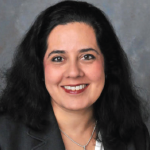
© Rido / shutterstock.com
An ophthalmologist anxious about the health crisis. A psychiatrist well-versed in drug metabolism and contraindications. An otologist with a chicken bone lodged in his esophagus. A surgeon who offers advice during his own medialization laryngoplasty.
Explore This Issue
July 2020Otolaryngologists encounter interesting cases all the time. In some cases, the patient happens to be a physician, which can make the encounter more or less challenging, according to veteran otolaryngologists. While the paradigm often changes when the patient is a physician, it doesn’t always have to be for the worse.
“Every patient is different. The best interactions I have with patients who are physicians is when they’re humble enough to check their white coats at the door, let me know their background, and then just be the patient,” said Sujana S. Chandrasekhar, MD, clinical professor at Zucker School of Medicine at Hofstra/Northwell, clinical associate professor at Icahn School of Medicine at Mount Sinai, and a partner with ENT and Allergy Associates LLC in New York City and New Jersey. “Some physicians are sure they have ‘X,’ and you have to say, ‘Let’s start with a history and exam. What are your symptoms?’
“Most physician-patients figure it out, and a weight is lifted. You can see it—they exhale and realize they can just be a patient.”
According to a study of family medicine physicians (Domeyer-Klenske A, Rosenbaum M. When doctor becomes patient: challenges and strategies in caring for physician-patients. Fam Med. 2012;44:471-477), common challenges treating physician-patients include:
- Maintaining boundaries;
- Avoiding assumptions about patient knowledge/behaviors; and
- Managing access to informal consultations, test results, and opinions from other colleagues.
“Some of my favorite patients have been physicians or healthcare workers … [but] there’s always more pressure for the physician-patient to have a good outcome,” said C. Blake Simpson, MD, professor in the department of otolaryngology at the University of Alabama at Birmingham, and director of the UAB Voice Center. “One of the pitfalls to avoid is making exceptions. When you start deviating from your normal practice patterns, that’s when you can get into trouble.”
Sujana S. Chandrasekhar, MD
Every patient is different. The best interactions I have with patients who are physicians is when they’re humble enough to check their white coats at the door, let me know their background, and then just be the patient. —Sujana S. Chandrasekhar, MD
Positives Outweigh the Negatives
While some physician-patients can be demanding or difficult, the majority are grateful for and appreciative of the care provided, according to Samir S. Khariwala, MD, MS, associate professor and chief of the division of head and neck surgery in the department of otolaryngology, head and neck surgery at the University of Minnesota in Minneapolis. He said it often enhances the relationship because the conversations can be more technical.
“One of the most difficult parts of my job is to impart what’s going to happen during the course of their treatment to a patient—what it will look and feel like, and the symptoms they might have,” he said. “I feel I have a head start when the patient is a physician. I can describe something about a procedure, like a surgical incision or surgical drain, and they’re ahead of my non-physician patients in comprehension.
“We also share this common knowledge of how to treat patients, so I think they have a better understanding of what I’m trying to accomplish. In terms of things like informed consent, explaining all the risks, etc., they know I’m not trying to scare them.”
Dr. Chandrasekhar said she encounters “a lot less nonsense” in terms of physician-patients expecting special treatment now when compared to 15 or 20 years ago, including being more respectful of her front desk staff. “Overall, physicians are more down-to-earth today,” she said, “and more open to sharing emotional concerns as well as physical ones.
“I recently cared for an ophthalmologist who seemed hesitant in the beginning,” said Dr. Chandrasekhar. “As we were talking, he opened up, and we talked about the anxiety he was feeling. We discussed the fact that one of his relatives suggested a medication that he didn’t want to take. It was really interesting. I understood immediately what his concerns were, and we talked about how we could best manage the situation.
“As I got to know him, I found he was a very nice person. At the end of treatment, he said, ‘You really know your stuff.’ I now have a colleague I can get a cup of coffee with and can refer my patients to.”
According to Dr. Simpson, an initial consultation with a physician-patient can be both different and enjoyable. “It tends to be very focused,” he said. “They usually know the important details, but occasionally they forget and leave things out of the history. When it comes to counseling, it’s terrific. You can use medical lingo, and they understand everything you’re saying with no filtering. You can discuss research studies and your own clinical experience. I think they appreciate that.”
Dr. Simpson, who spent two decades in San Antonio before starting at UAB in the winter of 2019, said he’s noticed throughout his career that physician-patients, more than lay patients, tend to ask him what course he would choose if he were the one receiving treatment.
“Doctors in procedural specialties—surgery, cardiology, gastroenterology—realize that there are risks involved in any procedure you suggest, and they tend to accept those risks better,” he said. “They also tend to pick the procedural route more often than not if the risks are low. I think they’re used to fixing things.
